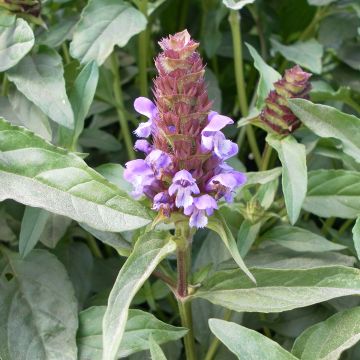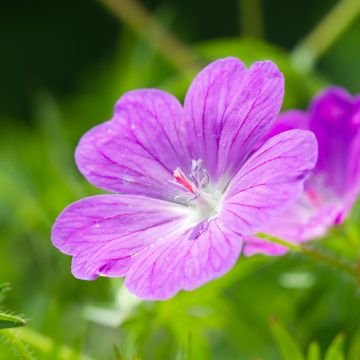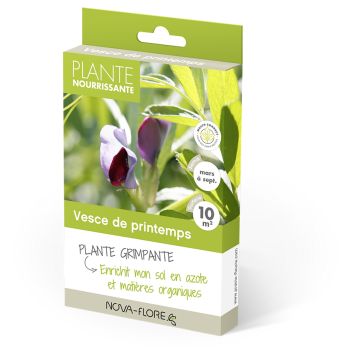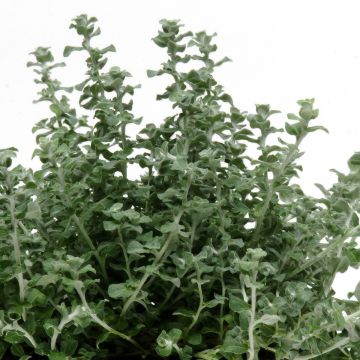

Crepis rubra Snow White - Hawksbeard seeds
Crepis rubra Snow White - Hawksbeard seeds
Crepis rubra Snow White
Red Hawksbeard, Pink Hawk's-beard
Special offer!
Receive a €20 voucher for any order over €90 (excluding delivery costs, credit notes, and plastic-free options)!
1- Add your favorite plants to your cart.
2- Once you have reached €90, confirm your order (you can even choose the delivery date!).
3- As soon as your order is shipped, you will receive an email containing your voucher code, valid for 3 months (90 days).
Your voucher is unique and can only be used once, for any order with a minimum value of €20, excluding delivery costs.
Can be combined with other current offers, non-divisible and non-refundable.
Why not try an alternative variety in stock?
View all →This plant carries a 6 months recovery warranty
More information
We guarantee the quality of our plants for a full growing cycle, and will replace at our expense any plant that fails to recover under normal climatic and planting conditions.
Would this plant suit my garden?
Set up your Plantfit profile →
Description
Crepis rubra Snow White is a delightful selection of an annual to biennial 'weed' called red hawkweed, native to meadows in the eastern Mediterranean. This small plant resembles a dandelion, is just as easy to grow as its famous cousin and has lovely pure white flower heads without a visible central disk. It blooms from spring to summer, depending on the climate and sowing date. Its graceful flowers, small size, and adaptable nature will delight lovers of wild plants. Sow it in sunny borders or rockeries, and let nature do its thing!
Crepis rubra is a plant with an annual or sometimes biennial life cycle, native to the eastern Mediterranean basin. Its distribution range includes Italy, Albania, Greece, Croatia, Montenegro, and Bulgaria. In the wild, red hawkweed grows in fields and meadows in full sun, often on rocky soil. It belongs to the asteraceae family, as evidenced by its delicate pink flowers arranged in flower heads. It is grown in ornamental gardens.
The 'Snow White' cultivar was selected for its white flowers, rather than pink. This plant will average 35 cm (14in) tall when flowering and first develops a rosette of serrated leaves that resemble those of a sow thistle or dandelion, more or less flat against the ground. Flowering occurs from April to August, depending on the sowing date, and lasts for several weeks. Each plant bears only one or two flower heads at the end of the floral stem. Each 'flower' or flower head, measuring 1.5 to 2 cm (1in) in diameter, is composed of nearly 100 pure white 'petals' or ligules. Unlike many plants in the Asteraceae family, the flower head does not have a contrasting central disk. The flowers attract numerous pollinating insects. This plant is hardy down to -12°C (10.4°F). Late summer sowing is possible in mild regions, allowing for earlier flowering. It self-seeds spontaneously in light soils.
This Snow White hawkweed is often overlooked by gardeners. With its modest stature and easy cultivation, this plant is particularly well-suited for perennial borders and works wonders when sown randomly among other plants. It is similar to the wild form, with its tender pink dandelion-like flowers. Its bright flowering will make an impact in a white garden or a flowery meadow mixed with centaureas, grasses, sainfoin, ornamental garlic, borage, agripaume, corn marigolds, California poppies, cosmos, damask nigellas, immortelles... It can also be sown in flower pots and is a lovely cut flower, for romantic or wild bouquets.
Flowering
Foliage
Plant habit
Botanical data
Crepis
rubra
Snow White
Asteraceae
Red Hawksbeard, Pink Hawk's-beard
Mediterranean
Other Flower seeds A to Z
View all →Planting and care
Sowing:
Sow Crepis rubra from March to May or September to October, preferably directly in place as their roots do not like being disturbed. You can also sow in trays or pots under shelter at 15-20°C (59-68°F), and transplant the young plants as soon as they are manageable. Light promotes seed germination. Autumn sowings will need to be protected from frost in winter, in a cool and bright location. In regions with mild winters, direct sowing in open ground at the end of summer is possible. If you want to sow directly in place in spring in cold regions, wait until the last frosts have passed.
Choose a very sunny location and light, well-drained soil. Finely rake, loosen and clear the soil of weeds. Sow the seeds 3 mm (0in) deep, 30 cm (12in) apart. Water the soil regularly with a watering can, especially during dry periods. Germination usually takes 14-21 days. When the seedlings are sufficiently developed to be handled, thin out the plants and transplant them 30 cm (12in) apart.
Cultivation:
Crepis rubra is undemanding in terms of soil, but it prefers well-drained soils. Plant it in full sun. This plant thrives in moderately moist to moderately dry soil, adapting its life cycle and flowering period to the climate: it will flower earlier in the south, even if it disappears in summer. Removing faded flowers will encourage more. This annual is robust and hardy and will grow in all regions.
Sowing period
Intended location
Planting & care advice
This item has not been reviewed yet - be the first to leave a review about it.
Similar products
Haven't found what you were looking for?
Hardiness is the lowest winter temperature a plant can endure without suffering serious damage or even dying. However, hardiness is affected by location (a sheltered area, such as a patio), protection (winter cover) and soil type (hardiness is improved by well-drained soil).

Photo Sharing Terms & Conditions
In order to encourage gardeners to interact and share their experiences, Promesse de fleurs offers various media enabling content to be uploaded onto its Site - in particular via the ‘Photo sharing’ module.
The User agrees to refrain from:
- Posting any content that is illegal, prejudicial, insulting, racist, inciteful to hatred, revisionist, contrary to public decency, that infringes on privacy or on the privacy rights of third parties, in particular the publicity rights of persons and goods, intellectual property rights, or the right to privacy.
- Submitting content on behalf of a third party;
- Impersonate the identity of a third party and/or publish any personal information about a third party;
In general, the User undertakes to refrain from any unethical behaviour.
All Content (in particular text, comments, files, images, photos, videos, creative works, etc.), which may be subject to property or intellectual property rights, image or other private rights, shall remain the property of the User, subject to the limited rights granted by the terms of the licence granted by Promesse de fleurs as stated below. Users are at liberty to publish or not to publish such Content on the Site, notably via the ‘Photo Sharing’ facility, and accept that this Content shall be made public and freely accessible, notably on the Internet.
Users further acknowledge, undertake to have ,and guarantee that they hold all necessary rights and permissions to publish such material on the Site, in particular with regard to the legislation in force pertaining to any privacy, property, intellectual property, image, or contractual rights, or rights of any other nature. By publishing such Content on the Site, Users acknowledge accepting full liability as publishers of the Content within the meaning of the law, and grant Promesse de fleurs, free of charge, an inclusive, worldwide licence for the said Content for the entire duration of its publication, including all reproduction, representation, up/downloading, displaying, performing, transmission, and storage rights.
Users also grant permission for their name to be linked to the Content and accept that this link may not always be made available.
By engaging in posting material, Users consent to their Content becoming automatically accessible on the Internet, in particular on other sites and/or blogs and/or web pages of the Promesse de fleurs site, including in particular social pages and the Promesse de fleurs catalogue.
Users may secure the removal of entrusted content free of charge by issuing a simple request via our contact form.
The flowering period indicated on our website applies to countries and regions located in USDA zone 8 (France, the United Kingdom, Ireland, the Netherlands, etc.)
It will vary according to where you live:
- In zones 9 to 10 (Italy, Spain, Greece, etc.), flowering will occur about 2 to 4 weeks earlier.
- In zones 6 to 7 (Germany, Poland, Slovenia, and lower mountainous regions), flowering will be delayed by 2 to 3 weeks.
- In zone 5 (Central Europe, Scandinavia), blooming will be delayed by 3 to 5 weeks.
In temperate climates, pruning of spring-flowering shrubs (forsythia, spireas, etc.) should be done just after flowering.
Pruning of summer-flowering shrubs (Indian Lilac, Perovskia, etc.) can be done in winter or spring.
In cold regions as well as with frost-sensitive plants, avoid pruning too early when severe frosts may still occur.
The planting period indicated on our website applies to countries and regions located in USDA zone 8 (France, United Kingdom, Ireland, Netherlands).
It will vary according to where you live:
- In Mediterranean zones (Marseille, Madrid, Milan, etc.), autumn and winter are the best planting periods.
- In continental zones (Strasbourg, Munich, Vienna, etc.), delay planting by 2 to 3 weeks in spring and bring it forward by 2 to 4 weeks in autumn.
- In mountainous regions (the Alps, Pyrenees, Carpathians, etc.), it is best to plant in late spring (May-June) or late summer (August-September).
The harvesting period indicated on our website applies to countries and regions in USDA zone 8 (France, England, Ireland, the Netherlands).
In colder areas (Scandinavia, Poland, Austria...) fruit and vegetable harvests are likely to be delayed by 3-4 weeks.
In warmer areas (Italy, Spain, Greece, etc.), harvesting will probably take place earlier, depending on weather conditions.
The sowing periods indicated on our website apply to countries and regions within USDA Zone 8 (France, UK, Ireland, Netherlands).
In colder areas (Scandinavia, Poland, Austria...), delay any outdoor sowing by 3-4 weeks, or sow under glass.
In warmer climes (Italy, Spain, Greece, etc.), bring outdoor sowing forward by a few weeks.






































































